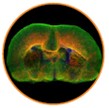Advanced 3D and Ex Vivo Model-Based Assays
Innovation to advance target discovery and validation

Are you in the lead optimization or candidate selection stage? Are you looking to validate targets or lead compounds in highly translational models? Do you need expert guidance to select and deploy the most appropriate model?
Concept Life Sciences offers advanced 3D and ex vivo tissue model-based assays that move beyond traditional 2D in vitro systems, delivering more physiologically relevant insights to accelerate your drug discovery process.
Advanced 3D and ex vivo tissue model-based assays
Our expert team collaborates closely with you to design assays tailored to your scientific, technical, and strategic goals. By creating tailored 3D and ex vivo model-based assays we help you validate targets and profile lead compounds with confidence to accelerate candidate nomination and provide translational data that informs clinical decision-making, driving success.
Validate with confidence - select with precision
Confirming efficacy in complex disease-relevant model systems before advancing to expensive in vivo studies can be complex, time-consuming, and resource-intensive.
Partnering with Concept Life Sciences enables you to:
- De-risk projects and reduce development uncertainties
- Make informed decisions before expensive preclinical testing
- Overcome the limitations of cells cultured in 2D by using 3D model systems encompassing
3D model systems include:
- Human cancer cell lines
- Fibroblasts
- Immune cells within a spheroid
Ex vivo tissue-based assays provide:
- Target validation
- Lead compound profiling
- Clinical candidate nomination
Models tailored for translational insight
When testing molecules in complex systems, human and rodent models provide powerful insight, especially for CNS-targeted compounds. Organotypic brain slices are the only preclinical model that preserves native brain tissue architecture and diverse cell populations.
Ex vivo tissue model (organotypic brain slices)

- Complex three-dimensional model, featuring preserved brain cell populations and tissue microarchitecture
- Generated from wild-type or genetically modified mouse lines
- Enables assessment of net effects resulting from complex cellular crosstalk
Applications include:
- Neuroinflammatory activation
- Inflammasome activation
- Neurotoxicity
- Neuroprotection
- Myelination
Learn more about disease modeling
Why choose Concept Life Sciences for 3D & ex vivo assays
- Tailored assays for predictive, translational outcomes
- Advanced 3D spheroid and organotypic tissue platforms
- Disease-relevant models for CNS, oncology, and immune research
- Expert scientific consultation for optimal assay design and data interpretation
Contact us for expert guidance
3D and ex vivo model assays FAQs
Q: What are 3D and ex vivo tissue model-based assays?
A: Advanced in vitro and ex vivo systems that mimic human tissue architecture, providing more predictive, translational preclinical data.
Q: How do 3D spheroids improve drug discovery?
A: 3D spheroids recreate cellular interactions, tissue gradients, and microenvironments, making preclinical predictions more accurate than 2D cultures.
Q: What applications are best for ex vivo brain slices?
A: CNS-targeted drug testing, neuroinflammatory studies, toxicity assessment, neuroprotection, and myelination studies
